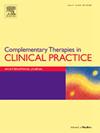不同中药注射剂治疗糖尿病下肢动脉病变的疗效:贝叶斯网络meta分析。
IF 2.2
3区 医学
Q2 INTEGRATIVE & COMPLEMENTARY MEDICINE
引用次数: 0
摘要
背景与目的:大量研究证实中药注射剂治疗糖尿病性下肢动脉疾病(Dia-LEAD)的有效性。然而,随着各种cmi的可用性,确定Dia-LEAD患者的最佳选择变得具有挑战性。本研究的目的是比较和排名CMIs对Dia-LEAD的疗效,为临床医生优化药物选择提供参考和证据。方法:我们对CMIs治疗Dia-LEAD的随机对照试验(RCTs)进行了全面检索,包括中国国家知识基础设施(CNKI)、万方、中国卫普科技期刊数据库(VIP)、中国生物医学文献数据库(CBM)、PubMed、Cochrane图书馆、Embase和Web of Science,涵盖成立至2023年10月15日。我们使用Cochrane Risk of Bias Tool 2.0评估偏倚风险,RevMan 5.4.1、GeMTC、STATA 13.0和R 4.2.1进行统计分析和网络meta分析的可视化。结果:我们分析了38项有12例CMIs的研究。与其他干预措施相比,舒血宁注射液(SXN) +常规治疗(CT)的总有效率(表面下累积排名(SUCRA)为86.2%)优于其他干预措施。丹参注射液(DS) + CT在改善踝肱指数(ABI) (SUCRA 95.1%)和足背动脉血流(DPABF) (SUCRA 88.8%)方面均居首位。丹红注射液(DH) + CT对改善血浆粘度的有效性概率最高(SUCRA为91.6%)。川芎嗪注射液(CXQ) + CT对纤维蛋白原水平的调节效果良好(SUCRA 77.1%)。此外,治疗组和对照组之间的不良反应无显著差异。结论:该研究表明,CMIs有潜力作为治疗Dia-LEAD的补充疗法,并支持CMIs与CT联合治疗在许多结局指标上的积极作用。特别是在改善血流动力学指标和血液流变学指标方面,DS联合CT可能是一种更有效的干预手段。然而,需要在更严格、高质量和多中心随机对照试验中进一步证实,以加强结果的有效性和普遍性。本文章由计算机程序翻译,如有差异,请以英文原文为准。
Effectiveness of different traditional Chinese medicine injections in patients with diabetic lower extremity arterial disease: A Bayesian network meta-analysis
Background and purpose
Numerous studies have demonstrated the effectiveness of Chinese medicine injections (CMIs) in treating diabetic lower extremity arterial disease (Dia-LEAD). However, with the variety of CMIs available, it has become challenging to determine the optimal choice for Dia-LEAD patients. This study aims to compare and rank the efficacy of CMIs for Dia-LEAD to provide references and evidence for clinicians in optimising drug selection.
Methods
We conducted a comprehensive search for randomised controlled trials (RCTs) of CMIs for treating Dia-LEAD, which included the China National Knowledge Infrastructure (CNKI), Wanfang, China Weipu Science and Technology Journal Database (VIP), Chinese Biomedical Literature Database (CBM), PubMed, the Cochrane Library, Embase, and Web of Science, covering inception to 15 October 2023. We used the Cochrane Risk of Bias Tool 2.0 to assess bias risk, and RevMan 5.4.1, GeMTC, STATA 13.0, and R 4.2.1 for statistical analysis and visualization of the network meta-analysis.
Results
We analysed 38 studies with 12 CMIs. Compared with other interventions, Shuxuening injection (SXN) + conventional treatment (CT) was superior in terms of the total effective rate (surface under the cumulative ranking (SUCRA) 86.2 %). Danshen injection (DS) + CT ranked first in improving the ankle-brachial index (ABI) (SUCRA 95.1 %) and dorsalis pedis artery blood flow (DPABF) (SUCRA 88.8 %). Danhong injection (DH) + CT showed the highest probability of effectiveness in improving the plasma viscosity (SUCRA 91.6 %). Chuanxiongqin injection (CXQ) + CT yielded favourable results in regulating fibrinogen levels (SUCRA 77.1 %). Furthermore, no significant differences in adverse reactions were detected between the treatment and control groups.
Conclusion
The study demonstrated that CMIs have potential as a complementary therapy for treating Dia-LEAD, and it supports the positive effects of combining CMIs with CT on a number of outcome indicators. Especially when it comes to improving the haemodynamics indices and the haemorheology indices, DS in combination with CT may be a more effective intervention. However, further confirmation in more rigorous, high-quality, and multicentre RCTs is needed to strengthen the validity and generalisability of the results.
求助全文
通过发布文献求助,成功后即可免费获取论文全文。
去求助
来源期刊

Complementary Therapies in Clinical Practice
INTEGRATIVE & COMPLEMENTARY MEDICINE-
CiteScore
6.30
自引率
6.70%
发文量
157
审稿时长
40 days
期刊介绍:
Complementary Therapies in Clinical Practice is an internationally refereed journal published to meet the broad ranging needs of the healthcare profession in the effective and professional integration of complementary therapies within clinical practice.
Complementary Therapies in Clinical Practice aims to provide rigorous peer reviewed papers addressing research, implementation of complementary therapies (CTs) in the clinical setting, legal and ethical concerns, evaluative accounts of therapy in practice, philosophical analysis of emergent social trends in CTs, excellence in clinical judgement, best practice, problem management, therapy information, policy development and management of change in order to promote safe and efficacious clinical practice.
Complementary Therapies in Clinical Practice welcomes and considers accounts of reflective practice.
 求助内容:
求助内容: 应助结果提醒方式:
应助结果提醒方式:


